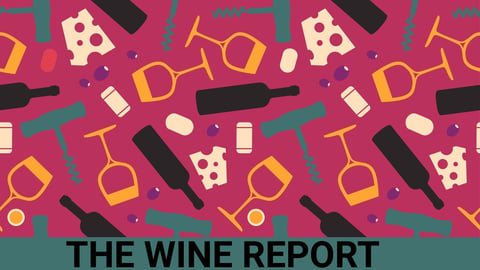Circle K finds unexpected success with wine
A visit to a Circle K in Ontario makes it clear: beer is the chain’s biggest bet in the alcohol category. Cases are stacked high on the floor and shelves, with plenty of cooler space reserved for single-serve beer cans and bottles.
While beer remains the category’s top seller in c-stores, outpacing RTDs and wine, the latter has emerged as an unexpectedly strong performer for the Couche-Tard chain.
At the Ontario Craft Wine Conference & Trade Show in Niagara Falls on April 23, Lucas Babando, Circle K’s category manager for beer, RTDs, cider and wine, expressed his satisfaction with wine’s reception by Circle K customers.
READ: Circle K rolling out beverage alcohol at 600 locations in Ontario
“I’m pleasantly surprised by wine’s share of our total alcohol sales,” he said. “It’s much higher than we expected, and on holidays and seasonal weekends wine becomes a significant amount of the share.”
Babando was part of a panel at the annual conference and trade show, this year titled “Navigating Ontario’s New Retail Landscape.” He was joined on the panel by Jennifer Gordon, Costco Wholesale’s assistant general merchandise manager for cooler, liquor, sundries, and tobacco, and Giancarlo Trimarchi, president of the independent grocer Vince’s Market. In addition, Anne Kothalwa, president and CEO of Convenience Industry Council of Canada (CICC), and Sebastian Prins, director of government relations (Ontario), Retail Council of Canada, joined the group on stage.
Far from being relegated to a corner, Circle K prominently features wine on end-cap displays, with some locations showcasing bottles on dedicated "wine walls."
The merchandising mix includes a strong focus on Canadian wine.
“Our selection of VQA wines is substantial,” says Babando, referencing the province’s quality assurance designation for local producers. Under Alcohol and Gaming Commission of Ontario (AGCO) guidelines, 40% of displayed wine product must come from VQA producers, small wineries or small wine-producing countries like Canada (of which 10% must be small wineries).
Lessons from grocers
For its part, Costco decided early on to list only VQA wines in its over 41 Ontario stores. “We weren't going to list blends, because space is limited at Costco, and we wanted to ensure that we had that top tier,” said Gordon, who grew up in Niagara. “We wanted to differentiate itself from the rest of the grocery trade.”
During the trade show, Costco met with more than 30 wineries in search of new and interesting products to add to its lineup. The move supports the retailer’s addictive “treasure hunt” shopping experience, where customers discover exciting, unexpected finds at great prices—often for a limited time.
But executing that strategy with alcohol under the current LCBO model “is not easy,” said Gordon, noting the lengthy process required for new wines to get listed on GMS.
“We want to figure out ways to make it easier for us to bring in wines and for you to sell not only to Costco, but to other retailers as well,” she told Niagara wineries in the crowd. “There’s great opportunity for all of us to test different items during different times of the year.”
She also criticized the exclusion of grocers and c-stores from the promotional pricing the LCBO negotiates with alcohol brands, pointing out that they are not only denied access to these discounts but are also prohibited from negotiating their own.
“When the product is discounted at the LCBO, we have to decide, can we go down [in price] to match the LCBO where we’re not going to be below the cost of goods and lose margin? If so, great, we’ll match them,” said Gordon. “If not, we made a decision early on that those products get pulled off the floor because we cannot be competitive.”
“We upset a lot of small producers and some Ontario producers here in the room, but it also made a statement [to the government],” added Gordon. “Unfortunately, we're no further ahead than where we were Oct. 31 [when Costco began selling alcohol]. It’s something that we still need to push.”
At Vince’s Market, shelves of beer, wine and RTDs at its four stores north of Toronto are “constantly replenished,” said Trimarchi. Alcohol orders are placed two to three times a week, depending on cut-off dates on GMS, the LCBO’s online ordering system for licensees.
The average wine order per store ranges between 50 and 75 cases. “We have a very wide SKU base, currently listing just over 90 wines,” says Trimarchi. “The idea is to provide lots of variety, choice and price points.”
What has most surprised him about wine? Getting shorted a case or two of a popular product doesn’t impact overall category movement.
“We've found that customers of beverage alcohol are not as selective as we would have otherwise thought,” he explained. “They can be urged to purchase a different offer, if great merchandising, shelf tags, placement, sampling and/or other promotion is happening.”
Wine blends, particularly those that had been coming up from the U.S., sell extremely well. “I thought there would be more preference for varietals or specific types of wine,” Trimarchi said. “However, people can be swayed by price very quickly, and oftentimes take away sales of everyday core lineup items,”
‘Buy Canada’ impact on wine sales
A subsequent session explored the "Buy Canada" environment through the lens of alcohol purchases.
Ipsos research revealed that among Ontario beer, wine, and spirits drinkers, 76% agree it’s important to buy Canadian, with 25% saying it’s “very important.” Only 7% of adult drinkers said it’s “not at all important.”
Encouragingly, nearly nine in 10 Canadians (87%) said they plan to keep buying Canadian even after current trade tensions subside.
However, the movement has yet to translate into a boost in Canadian wine sales at Circle K. “We haven’t seen a customer shift toward VQA yet,” Babando noted. “But we’ll adapt if we start seeing them looking more for Canadian or Ontario-made wines.”
He suggested the slower uptake might be partly due to existing overstock of other varietals, along with the unique dynamics of the c-store environment.
“Convenience is an impulse-driven environment—small-format stores, heavy on signage, promotions, and innovation. Decision-making takes about 30 seconds,” explained Babando. “I wonder if some of the smaller producers are being drowned out by the macro brands.”
He added that customers who favour craft or limited-production brands often have higher incomes and education levels, a demographic that Circle K doesn’t see as much as other retail channels.
Still, Babando sees opportunity ahead for its roughly 600 Ontario stores.
“We have to leverage the macro brands to get our customers in the door, and then we can regionalize and localize based on the taste [preferences] of certain communities,” says Babando. “If there's more sophisticated drinkers in a given area, I'd like to know about those limited-production smaller wines, as they would be a good fit.”





